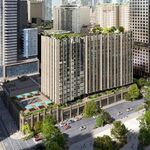Because people don't like walking, and generally, people living in dense areas have all the services they need within walking distances, meaning they don't have to use the TTC. Dense areas, in general, also tend to have a lot more transportation services nearby, so people getting to work have lots of options for getting around. People who depend on one feeder bus route to take them to one particular station do not have this luxury. There are a lot of gaps in the bus network along the Sheppard line and through north York. Because of the zoning restrictions, nimbyism, and the TTC's budget/bus/resource shortages, I'm convinced that the main reason the Sheppard line isn't more popular is because of existing policies that prevent it from thriving. I know plenty of people living up there that want to use it, but cannot due to the difficulties of working with the last mile solution.
Eventually, the line will be an important crosstown route that could eventually connect with Line 1 twice, the relief line (In whatever form it is built as), the RH line, the Stouffville line, and Line 2, but that's decades in the future. We need to fix Line 1's capacity constraints first. People need to understand that not all growth happens at once, and that transportation usage in it of itself is impossible to truly predict. Bessarion was never built with a bus station or other amenities because it doesn't demand them and doesn't have the road network to warrant them, it was built for a planned development that would be one of the largest in the city. No one knew when it was going to be built, but 20 years later, we're now seeing that there might be some benefit to the station in the near future. Could there have been better ways of building the line, maybe complete the station at a later date like NYC? Potentially, but there's also financial risk with that, building stations is much more expensive now than it was in 2002, and there are questions over whether such a station would ever be built, regardless of Park Place's construction. However, that being said, other stations on the line might have benefited from those resources being spent elsewhere at the time. Bayview might have benefitted from a fare-paid area bus terminal for the Bayview buses, and both Bayview and Leslie may have benefitted from increased bus routes connecting the stations. We'll never know for sure, unless the TTC takes an active interest in running more local routes out of Leslie, which may not be a bad idea when the new bus garage opens.






